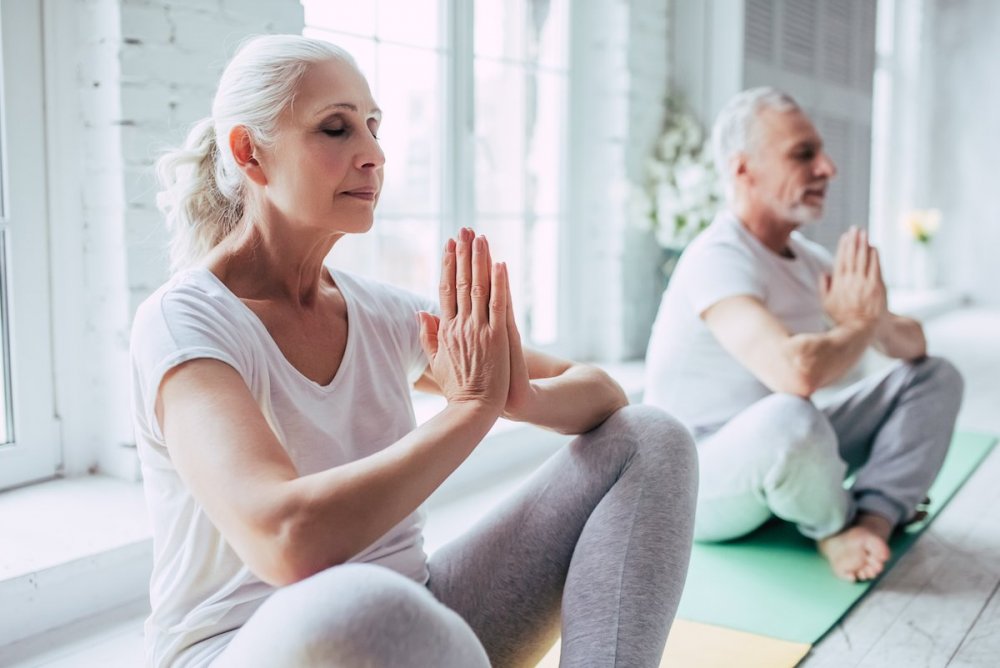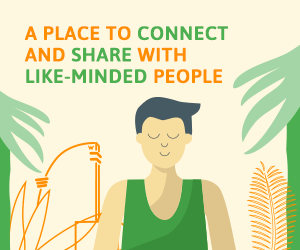If you're an anxious person, practising yoga regularly could help to regulate your stress response. From regulating breathing to breaking the worry cycle, Calvin Holbrook examines the benefits of yoga for anxiety. Plus, discover some great videos to get you started.
Most of us have experienced feelings of anxiety during our lives. From a small case of butterflies in the stomach to full-blown panic, anxiety is a natural response to what we see as stressful situations, and one that can help us react appropriately when we really are in danger. So, how could yoga help us cope with anxiety?
For those of us living with an anxiety disorder, feelings of fear often aren’t a rational response to external circumstances. Furthermore, they can develop into a dominating and disruptive influence in the form of panic attacks or panic disorders such as agoraphobia.
In England, one in six people experience a common mental health problem (such as anxiety and depression) in any given week. Similar figures exist in the USA. Here, anxiety disorders are the most common mental illness, affecting 40 million adults – roughly 18 per cent of the population – every year. 
Yoga can help relieve stress shutterstock/4 PM Production
Those living with extreme anxiety issues often experience a hyperarousal of the fight/flight survival response in the form of panic attacks, which creates a feeling of urgent fear and ignorable physical symptoms. Indeed, many people think they are about to die during an attack. So, how can someone experiencing this begin to calm down when their brain and body is telling them they are in mortal danger?
How yoga can help with anxiety
A 2006 study from UCLA’s Department of Psychiatry showed that almost 30 per cent of anxiety disorder patients may be “treatment resistant”, finding front-line interventions such as medication ineffective.
This in part may help to explain why so many people with anxiety seek alternative treatments. Indeed, a 2001 study from Harvard Medical School showed that just over half – 56 per cent – of the 2,000 people questioned living with anxiety disorders seek alternative and complementary medicine.
RELATED: How to stop a panic attack – 12 tips on what to do when anxiety hits hard
Yoga is just one of those alternative treatments. Incorporating postures, meditation, visualization, and breath focus, the overall practice of yoga can elicit the relaxation response, allowing both the mind and body and mind to calm down.
And, while yoga is an ancient practice, many of the systems of yoga – believed to be created by the sage Patanjali – feature elements used in modern anxiety treatments: relaxation techniques focused on breath regulation, cognitive reframing, behavioural recommendations, mindfulness of sensory input, as well as methods for greater cognitive flexibility, stress reduction and increased concentration.
“Yoga elicits the relaxation response, allowing both the mind and body and mind to calm down.”
Because yoga is a mind-body practice, people who do it become more aware of the link between their minds and bodies. This can help them to become less anxious. Furthermore, through practising yoga regularly, those living with anxiety are also unconsciously building resilience and learning to regulate their stress response. Yoga therapy for anxiety is also a great option as it's a long-term, safe, and relatively inexpensive treatment option.
Ways yoga can help with anxiety
Here are four specific ways yoga can help you if you're an anxious or easily stressed person.
1. Yoga helps us to regulate our breathing
When we're anxious or stressed, our breathing often becomes rapid or shallow. We may even (unconsciously) start to hold our breath. As our breath is intimately connected to our nervous system, negative changes in it feed back to increase feelings of anxiety. Reversely, if we deepen and slow our breathing, it soothes and relaxes the nervous system. Breathing is integral to yoga and practising it teaches us how to breathe with awareness. Furthermore, we can take this breath focus with us outside of the yoga class and implement it in day-to-day stressful situations.
Yoga breathing exercises for anxiety YouTube/WebMD
2. Yoga lowers tension and promotes relaxation
Ever felt your body becoming tenser while stressed or anxious? Our bodies often constrict during periods of anxiety and stress. We start to hold tension in our back, shoulders, jaw, neck, or elsewhere. Yoga can help us to relax and lower our physical tension, in turn release the power that anxiety has on us.
Yoga for relaxation YouTube/Yoga With Adriene
3. Yoga breaks worry cycles
Stepping onto the yoga mat gives us a chance to be mindful. As postures require focus, yoga helps with anxiety by forcing us to concentrate on our breath, bodies and movement, therefore letting go of other worries and negative thoughts. If we practise yoga regularly enough, this can help us break our worry cycles and reduce anxious thoughts.
Yoga to Calm Your Nerves YouTube/Yoga With Adriene
4. Yoga trains us to accept discomfort
We naturally run away from discomfort, but we may experience it while holding various yoga poses. Yoga asks us to experience this uncomfortable feeling for a while and not try to escape it. Knowing that we can experience discomfort and deal with it can help us when coping with anxiety, for example, encouraging us to ride through a panic attack instead of trying to run away from it.
20-min yoga for anxiety workout: YouTube/Yoga With Adriene
Yoga for anxiety: the scientific evidence
In recent years, increasing numbers of scientific studies have backed up the ideas above. Indeed, much of the existing research suggests that yoga is an effective additional therapy for people living with anxiety when used alongside other recommended methods such as Cognitive Behavioural Therapy, relaxation techniques and medication.
Various studies have been completed which point to the clinical value in including yoga in anxiety treatment. A 2010 study published in The Journal of Alternative and Complementary Medicine compared a group doing a 12-week yoga intervention with a similar group practicing walking instead. Those doing yoga were associated with greater improvements in mood and anxiety than those doing the walking exercise.
Similarly, a 2007 study from Adelaide’s University of South Australia that compared yoga with relaxation techniques concluded that a 10-week yoga programme reduces stress, anxiety and improves health status in several key ways.
“Because yoga is a mind-body practice, people who do it become more aware of the link between their minds and bodies. This can help them to become less anxious.”
Furthermore, a 2005 German study backed up these results. Twenty-four women who described themselves as ‘emotionally distressed’ took two 90-minute yoga classes a week over three months. At the same time, a control group maintained usual activities without engaging in any exercise or stress-reduction techniques.
At the end of the three-month practise period, the yoga group of women reported improvements in energy, perceived stress, fatigue and overall well-being. Impressively, depression scores improved by 50 per cent while anxiety scores by 30 per cent.
The takeaway: yoga for anxiety
As the studies outline above, yoga has proven benefits for those living with anxiety and stress. Regularly practising it can help you to build resilience and regulate your stress response, helping you to feel calmer and happier . ●
Are there other ways you've found that yoga helps with anxiety and dealing with stress? Please share with the community below...
Written by Calvin Holbrook
 Calvin edits our magazine and is a lover of swimming, yoga, dancing to house/techno, and all things vintage. Find out more.
Calvin edits our magazine and is a lover of swimming, yoga, dancing to house/techno, and all things vintage. Find out more.




Join the conversation
You are posting as a guest. If you have an account, sign in now to post with your account.
There are no comments to display.